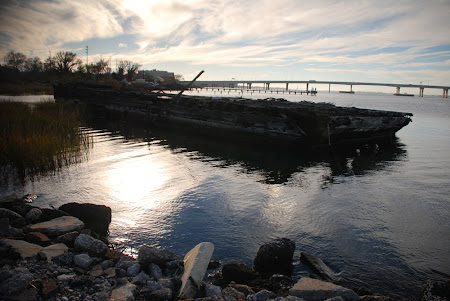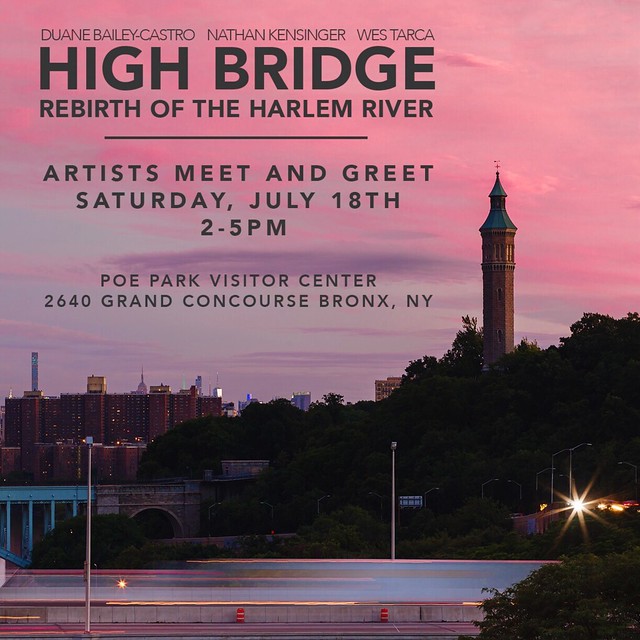The Bloomberg Era, Part Two
 The Bloomberg Era, Part Two:
The Bloomberg Era, Part Two:Forced Change
December 31, 2010 - At the beginning of the second decade of the 21st century, this multi-part photo essay examines how New York City's built environment has changed over the past 10 years, and what the future of New York's skyline might be. Part one of this essay can be seen here.
On January 1st 2010, Michael Bloomberg was sworn into office for a nearly unprecedented third term as the Mayor of New York City. Bloomberg, the 23rd richest person in the world, is only the fourth mayor in the city's history to serve a third term in office, and accomplished that goal by running "the most expensive self-financed political campaign in U.S. history," according to the Huffington Post. During his tenure, Mayor Bloomberg has "amassed so much power and respect that he seems more a Medici than a mayor," according to The New Yorker. He has used his power and wealth to enact an agenda of post-9/11 development that has radically changed the city's landscape. As described in part one of this photo essay, "not since Robert Moses has a single individual presided over such a large-scale transformation of New York City's built environment."
Like Robert Moses, the legendary Power Broker, Mayor Bloomberg currently exerts a stranglehold of power over New York City. In 2009, New York Magazine bluntly declared "Mike Bloomberg owns this town," and "in the past seven years Michael Bloomberg has become the only powerful figure in New York who really matters.... The mayor is not a dictator... but Bloomberg gets what he wants more than any mayor in modern memory." Also like Robert Moses, who was called New York's Master Builder, much of Mayor Bloomberg's work has focused on constructing a new version of the city. In 2009, Bloomberg drew comparisons between his accomplishments and Robert Moses', telling The New Yorker that "we’ve done more in the last seven years than—I don’t know if it’s fair to say more than Moses did, but I hope history will show the things we did made a lot more sense." Unfortunately, the parallels between Bloomberg and Moses also include the use of controversial methods to force development projects through, often at the expense of New York's unique fabric of small neighborhoods.

The Atlantic Yards (2006)
The Atlantic Yards development in Brooklyn is the best known example of the Bloomberg administration's use of eminent domain. Announced in 2003, this project threatened residents and business owners in Prospect Heights with property seizure to make way for a basketball arena and several luxury residential towers. Years of court battles and street protests delayed the plan, which was critically examined in the award winning documentary films Brooklyn Boondoggle (2009) and Brooklyn Matters (2007).
This year, however, the Atlantic Yards project cleared most of the major hurdles in its path. In April 2010, the last residential holdout in the development footprint cut a $3 million deal to move out, and in August 2010 Freddy's Bar and Backroom - a hub for neighborhood protests and a local institution dating back to the prohibition era - was completely demolished, although not before being immortalized by the documentary Freddy's (2010). Construction for the arena is now underway, but with the current recession the entire project may take as long as 25 years to complete, placing an immense strain on a neighborhood now blighted by empty lots where homes once stood.
In the upper west side neighborhood of Manhattanville, eminent domain has been used as a threat to force independent business owners out of a mostly industrial area. Seventeen acres, including Cuban restaurants, storage warehouses and gas stations, were declared blighted by the city in order to clear the land for a $7 billion extension of Columbia University's campus. After several years of legal battles, this year the New York Court of Appeals upheld the use of eminent domain in the neighborhood, according to the NY Times, with a June 2010 ruling that "cited a decision in a similar eminent-domain case last year involving the Atlantic Yards development in Brooklyn." Using questionable logic, the judges declared that "if we could rule in favor of a basketball arena, surely we could rule for a nonprofit university." In December 2010, the United States Supreme Court refused to hear an appeal of the decision, and "work is expected to start next month on the first building at the new campus," according to the NY Times.
In the Iron Triangle, otherwise known as Willets Point, eminent domain has been used to scare business owners out of a bustling car-repair neighborhood which employs over a thousand people. Long neglected by the city government, Willets Point is laced with flooded dirt roads that sit in the shadow of Citi Field, the new Mets stadium. Mayor Bloomberg's administration hopes to demolish the neighborhood's businesses and replace them with a $3 billion development including luxury hotels, residences and retail shops. After years of protest, this year the NY Times reported that the city controlled roughly 80 percent of the land needed for the first stage of development, but "opponents included a Willets Point homeowner, 18 businesses and a group formed to fight the project."
 Lake Willets (2008)
Lake Willets (2008)
Eminent domain may be the most controversial weapon of change in Bloomberg's arsenal, but his most effective tool for transformation has been rezoning neighborhoods. "Zoning shapes the city," according to the Department of City Planning. "Zoning determines the size and use of buildings, where they are located and, in large measure, the densities of the city’s diverse neighborhoods. Along with the city's power to budget, tax, and condemn property, zoning is a key tool for carrying out planning policy."
By 2009, Mayor Bloomberg had instituted 100 zoning changes throughout the city, creating a map of new uses for city neighborhoods stretching from the South Bronx to The Rockaways. "Sections in all the boroughs were rezoned to boost their development potential," according to the NY Times, a rezoning equal to about 8,400 blocks or "one-fifth of the city" which is "the most extensive rezoning in modern city history." In 2009, The New York Observer stated that "zoning reform of the type we have had in New York City these past eight years typically has a profound and long lasting impact on the physical contours of the city. There is little doubt... that the impact of this visionary zoning reform will be felt in New York for decades to come."

The Desertification of Brooklyn (2010)
Zoning changes instituted by Bloomberg's Department of City Planning have already significantly altered the landscape of the city. The 2005 rezoning of Greenpoint and Williamsburg, for example, allowed large portions of Brooklyn's historic industrial waterfront to be transformed into new residential towers. A wave of luxury housing swept through these neighborhoods, before being crippled by the recession, which has left the area scarred with empty fields and abandoned construction sites. The same boom and bust has affected other neighborhoods rezoned for development, including Harlem and Gowanus.
In the past decade, every neighborhood in New York City has seen new residential towers built. "Across the city, residential construction doubled under Mr. Bloomberg, to more than 30,000 units a year from 2004 through 2008," according to a 2009 NY Times assessment. "Construction spending has also doubled since he took office, reaching a high of $32 billion in 2008" However, after the development bubble burst in 2008, every neighborhood in New York City has been blighted with empty lots and abandoned buildings. Bloomberg's ambitious rezoning and pro-development policies have led to widespread Bloomblight in the form of hundreds of stalled construction projects throughout the five boroughs.
 Demolition on the Waterfront (2008)
Demolition on the Waterfront (2008)
The Department of City Planning states that their rezoning work is focused on preserving New York City's diversity. "New York City’s neighborhoods are its greatest treasures," writes Amanda Burden, the DCP commissioner. "Our innovative use of zoning is making a real difference in our neighborhoods, providing for new jobs and housing opportunities and ensuring the diversity and vibrancy that makes ours the most unique city in the world." A recent report by NYU somewhat agreed, finding that "in an era of unprecedented rezoning across New York City... the vast majority of the changes preserved neighborhoods the way they were, protecting them from denser or out-of-scale development," according to the NY Times.
However, the last decade has seen many New York City neighborhoods become less diverse and less vibrant. The 2010 census found that "New York's black and hispanic areas [have] become more white," according to the NY Times, "as blacks, Latinos, Asians and immigrants surge into the suburbs." Meanwhile, the city has lost much of its vibrant street life due to city policies. More than twelve percent of the city's small businesses closed in 2009 as small business loans "plummeted," according to City Limits. "Owners complain about... rezoning and redevelopment initiatives that favor larger retailers over small stores or residential over commercial uses."

The Glass Invasion (2009)

Lower East Side Tower (2009)

East Village Tower (2009)

Far Rockaway Tower (2009)
Unlike Robert Moses, Mayor Bloomberg does not appear to have a grand overview for the transformation of New York City. Instead, his administration has relied on private developers and zoning changes to allow change to happen. "Real planning is not something New York City has ever done," according to a 2011 article in City Limits. "Other major cities have drafted comprehensive plans that linked land development to transit improvements and government services. But New York has always relied on zoning, which creates rules for what the private market can build, rather than planning."
At the end of 2010, many of the major development projects started under Mayor Bloomberg's administration remain unfinished. "Who knows how long it will take before Mayor Bloomberg's legacy-making checklist—Hudson Yards, Moynihan Station, the World Trade Center, Coney Island and Willets Point—even show significant progress, let alone get completed," Curbed wrote back in 2008. "Perhaps during a third term?" The future of these projects and many others remains uncertain.

Coney Island Development (2008)
In the past decade, opposition to many of Robert Moses' controversial projects has mellowed, especially after a major retrospective in 2007 that reevaluated his contributions to the city. In years to come, how will the public evaluate Bloomberg's contributions to the city skyline? Will New Yorkers embrace the hundreds of luxury condominiums which have been constructed? It remains to be seen what Michael Bloomberg's final legacy will be, however the NY Times summed up the feelings of many New Yorker's in a 2010 editorial written for his third inauguration: "The next time some bigwig wants a stadium or a fat new zoning change, the mayor should take care to demand more parks and public facilities as part of the deal. The bottom line for any development should be that it helps out more than the developer’s bottom line."

Iron Triangle Warning (2007)
















































